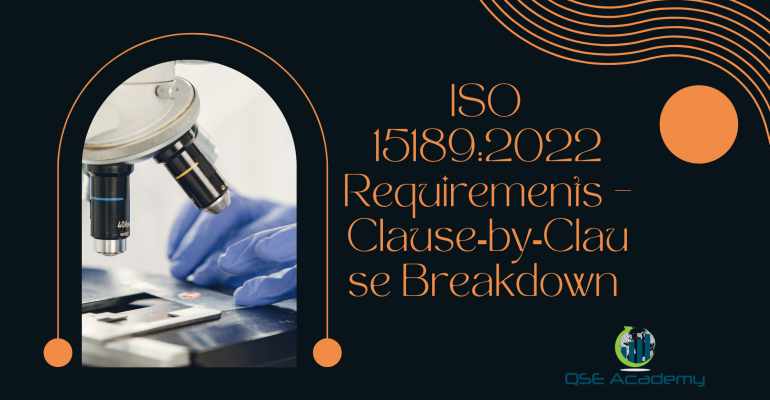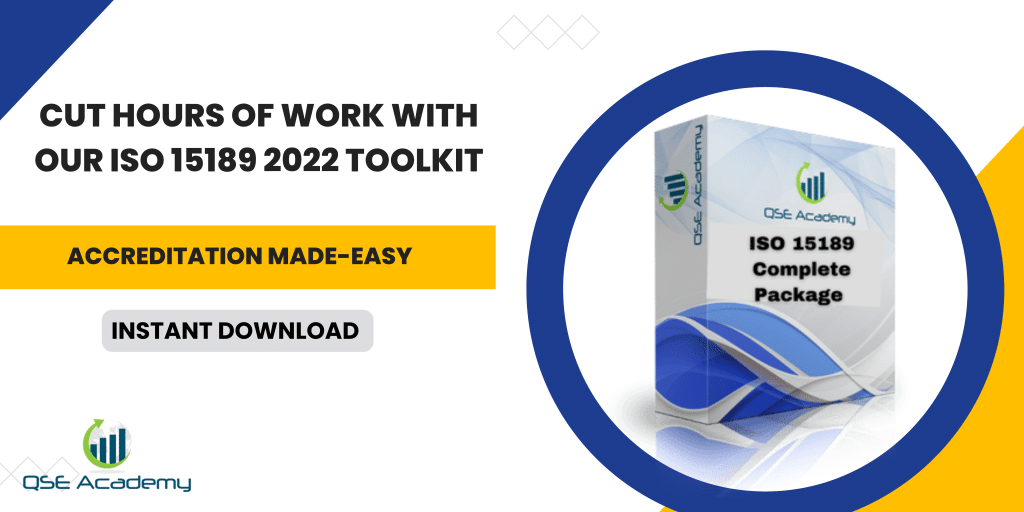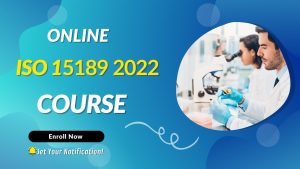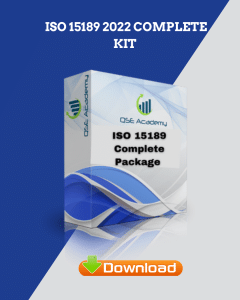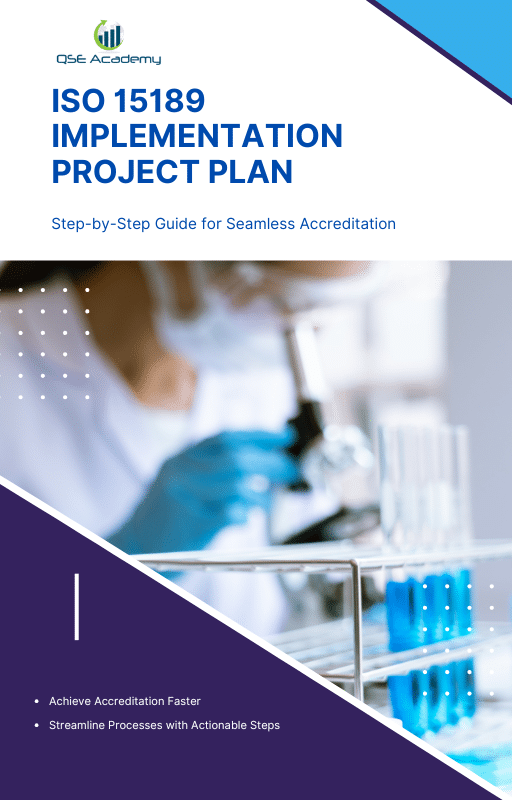ISO 15189:2022 Requirements – Clause‑by‑Clause Breakdown
Last Updated on October 22, 2025 by Hafsa J.
Mastering ISO 15189:2022 Step by Step
ISO 15189:2022 sets the global benchmark for medical laboratory quality and competence. It’s the standard that ensures every test, every report, and every decision built on lab data is accurate, reliable, and defensible.
But here’s the challenge most labs face: understanding the clauses is one thing—applying them as a single, working system is another. That’s what this guide is designed to solve.
This pillar article walks you through ISO 15189:2022 clause by clause, breaking down what each section means, how they connect, and what assessors expect to see. Whether you’re implementing the standard for the first time or upgrading your existing system, this breakdown will help you navigate the transition confidently.
In my experience working with accredited laboratories, the most successful ones treat the clauses as a continuous quality loop—each requirement reinforcing the next. That’s what transforms compliance into real operational excellence.
By the end, you’ll have a clear understanding of how Clauses 4 to 8—covering impartiality, structure, resources, processes, and management systems—work together to create a laboratory that’s not just compliant, but trusted.
Overview of ISO 15189:2022 – What the Standard Covers
ISO 15189:2022 is built around one clear goal—ensuring that medical laboratories produce results patients and clinicians can trust. It combines quality management principles with technical competence requirements, creating a framework that links ethics, accuracy, and efficiency into one standard.
The structure of ISO 15189:2022 is designed to mirror how a real laboratory operates. It doesn’t just describe what to do; it tells you how to organize, manage, and verify every part of your system. Each clause builds on the last to form a complete quality cycle:
-
Clause 4 sets the foundation with impartiality and confidentiality.
-
Clause 5 defines structure, leadership, and accountability.
-
Clause 6 focuses on resources—people, equipment, facilities, and data systems.
-
Clause 7 turns those resources into action, detailing the entire testing process.
-
Clause 8 closes the loop through management systems, audits, and continual improvement.
Together, these clauses form a living system—not a collection of policies. When implemented correctly, they ensure that every sample is handled properly, every result is valid, and every decision is traceable.
Pro Tip: Think of ISO 15189 as a framework for trust. It doesn’t just tell you what to comply with—it teaches you how to prove competence, every single day.
Clause 4 – General Requirements for Impartiality & Confidentiality
Clause 4 sets the ethical foundation for ISO 15189:2022. It ensures that your laboratory operates with independence, integrity, and respect for confidentiality—because technical competence means little without trust.
Under this clause, your lab must identify and manage any risks that could compromise impartiality. That includes financial interests, management pressures, or dual roles that could influence results. Confidentiality, on the other hand, protects all patient and client information from unauthorized access or disclosure, whether written, electronic, or verbal.
To comply effectively, your lab needs clear policies and records to prove both impartiality and confidentiality are maintained at all times. That means:
-
Conflict-of-interest declarations for all key personnel.
-
Confidentiality agreements for staff, contractors, and visitors.
-
Documented procedures for information security and access control.
Pro Tip: Schedule periodic impartiality and confidentiality reviews during management meetings. It’s a simple step that strengthens integrity and demonstrates ongoing compliance to assessors.
Clause 5 – Structural Requirements: Building a Clear Laboratory Framework
Clause 5 defines how your laboratory should be structured to operate effectively and demonstrate accountability. It’s not about hierarchy—it’s about clarity. Every role, responsibility, and decision path must be defined so that quality isn’t left to chance.
Your structure should ensure that:
-
Responsibilities are clearly assigned for technical, quality, and administrative functions.
-
There’s no overlap or conflict that could compromise impartiality or decision-making.
-
Leadership—especially the Laboratory Director and Quality Manager—actively oversee operations and quality management.
A well-defined structure builds confidence. It shows assessors that your lab operates under control and that every decision is traceable to an authorized person.
Pro Tip: Link each position’s responsibilities directly to the corresponding ISO 15189 clauses. When assessors ask “Who’s responsible for this requirement?”, your documentation will give them the answer immediately.
Clause 6 – Resource Requirements for Personnel & Equipment
Clause 6 ensures that your laboratory has the right people, environment, and tools to deliver reliable results. It moves beyond policies—it focuses on the competence and capability behind every test result.
This clause covers all aspects of resourcing:
-
Personnel: Every staff member must be qualified, trained, and authorized for their assigned tasks. Competence evaluations, refresher training, and clear job descriptions are essential evidence.
-
Facilities and Environment: Temperature, humidity, and contamination control all affect accuracy. The lab environment must consistently support valid results.
-
Equipment and Reagents: All instruments, reagents, and software must be selected, calibrated, and maintained according to defined schedules.
-
Information Systems: LIMS or software used in testing must be validated and controlled to protect data integrity.
Pro Tip: Maintain a Resource Register combining staff competence, equipment calibration, and environmental monitoring in one system. It shows auditors that your resources are not just present—but fully controlled and performance-verified.
Clause 7 – Process Requirements Step-by-Step
Clause 7 is the operational heart of ISO 15189:2022—it’s where all the planning, structure, and resources come together to produce reliable test results. This clause covers the full laboratory workflow from the moment a sample is collected to when the final report is released.
Here’s what it includes:
-
Pre-examination: Patient preparation, sample collection, labeling, transportation, and receipt. Every detail must ensure sample integrity before testing begins.
-
Examination: The analytical phase—method validation, calibration, internal quality control, and traceability to reference standards.
-
Post-examination: Review, authorization, reporting, and record retention. Reports must be accurate, clear, and delivered securely to authorized recipients.
-
Nonconforming Work: Procedures for identifying, documenting, and correcting any errors or deviations.
-
Quality Control and Assurance: Ongoing verification through internal QC, proficiency testing, and performance monitoring.
Pro Tip: Map your complete testing workflow—linking forms, logs, and records at each step. This visual approach helps staff understand their responsibilities and gives assessors clear traceability across the testing process.
Clause 8 – Management-System Options A & B
Clause 8 ties everything together—it’s the management backbone that keeps your laboratory consistent, transparent, and continually improving. This clause ensures that your entire quality system isn’t just documented but actively managed and reviewed.
ISO 15189:2022 gives you two ways to meet this requirement:
-
Option A: Build your management system fully within ISO 15189. This approach is straightforward and ideal for labs without other ISO certifications.
-
Option B: Integrate ISO 15189 into an existing ISO 9001 management system. It’s designed for hospitals, multi-lab groups, or organizations already working within an ISO 9001 framework.
Regardless of which option you choose, the core expectations remain the same:
-
Maintain a documented quality policy and objectives.
-
Conduct internal audits and management reviews to evaluate performance.
-
Manage nonconformities and corrective actions effectively.
-
Demonstrate continual improvement through measurable results.
Pro Tip: Align your management review agenda with the clauses—cover impartiality, structure, resources, process control, and improvement in one cycle. This approach ensures your leadership reviews every part of the system systematically.
Linking It All Together – How Clauses 4 to 8 Work as One System
Understanding each clause in isolation is important—but the real strength of ISO 15189 comes when you see how they connect. Clauses 4 through 8 aren’t separate checklists; they’re interlocking parts of one continuous quality loop.
Here’s how they work together:
-
Clause 4 ensures integrity and trust through impartiality and confidentiality.
-
Clause 5 establishes a clear structure so responsibilities and authority are defined.
-
Clause 6 equips your lab with competent people, calibrated equipment, and stable conditions.
-
Clause 7 drives the core process—receiving, testing, and reporting results.
-
Clause 8 manages the entire system, verifying performance and pushing continual improvement.
This integration creates what assessors call a closed quality cycle—every activity is planned, performed, checked, and improved. When all clauses function together, quality becomes predictable, and compliance becomes natural.
Pro Tip: Build a Clause Cross-Reference Matrix showing where each requirement is implemented across your procedures and forms. It not only simplifies internal audits but also helps new staff see how the whole system fits together.
Common Audit Findings Across Clauses
Even well-prepared laboratories encounter nonconformities during accreditation. Most of them aren’t due to poor testing—they stem from weak documentation or incomplete implementation of the standard’s intent. Understanding the common pitfalls helps you stay ahead of them.
Here are the issues auditors most frequently report:
-
Clause 4 (Impartiality & Confidentiality): Missing risk assessments or undeclared conflicts of interest.
-
Clause 5 (Structure): Unclear role descriptions or lack of formal delegation of responsibilities.
-
Clause 6 (Resources): Outdated training records, incomplete equipment calibration evidence, or missing environmental monitoring logs.
-
Clause 7 (Processes): Gaps in sample traceability, missing QC trend analysis, or incomplete handling of nonconforming work.
-
Clause 8 (Management System): Management reviews that list data but lack conclusions, actions, or measurable follow-up.
Pro Tip: During internal audits, don’t just check compliance—ask why each record exists and how it helps maintain reliability. That mindset shift often exposes weak spots before assessors do.
Quick Prevention Checklist:
✔ Maintain current job descriptions and authorization records.
✔ Track calibration, maintenance, and environmental logs monthly.
✔ Record QC trend reviews and proficiency testing evaluations.
✔ Keep management review minutes with assigned follow-ups.
When every clause has supporting evidence that’s current, traceable, and actively used, your lab demonstrates more than compliance—it shows maturity.
FAQs – ISO 15189:2022 Clause-by-Clause Explained
Q1: What’s the main focus of ISO 15189:2022?
The standard focuses on building a quality and competence framework for medical laboratories. It ensures that every test, report, and result is accurate, traceable, and performed under controlled conditions that protect patient safety.
Q2: Which clause is the most critical for accreditation success?
Clause 7—Process Requirements—is often the most challenging because it covers the full laboratory workflow. Auditors pay close attention to sample traceability, method validation, and result reporting since these directly affect accuracy and reliability.
Q3: How often should each clause be reviewed or audited internally?
All clauses should be covered at least once a year through your internal audit program. High-risk areas, like testing processes or impartiality management, may require more frequent checks.
Q4: Do smaller laboratories need to apply every clause exactly the same way as larger labs?
Yes, but with scalability. ISO 15189 allows flexibility in how you meet each requirement—what matters is that your implementation achieves the intent of the clause, regardless of your lab’s size.
Q5: How does ISO 15189 interact with ISO 9001 or ISO/IEC 17025?
ISO 15189 draws structure from ISO 9001 and technical rigor from ISO/IEC 17025. Understanding those links helps laboratories integrate multiple systems efficiently under Clause 8’s management options.

